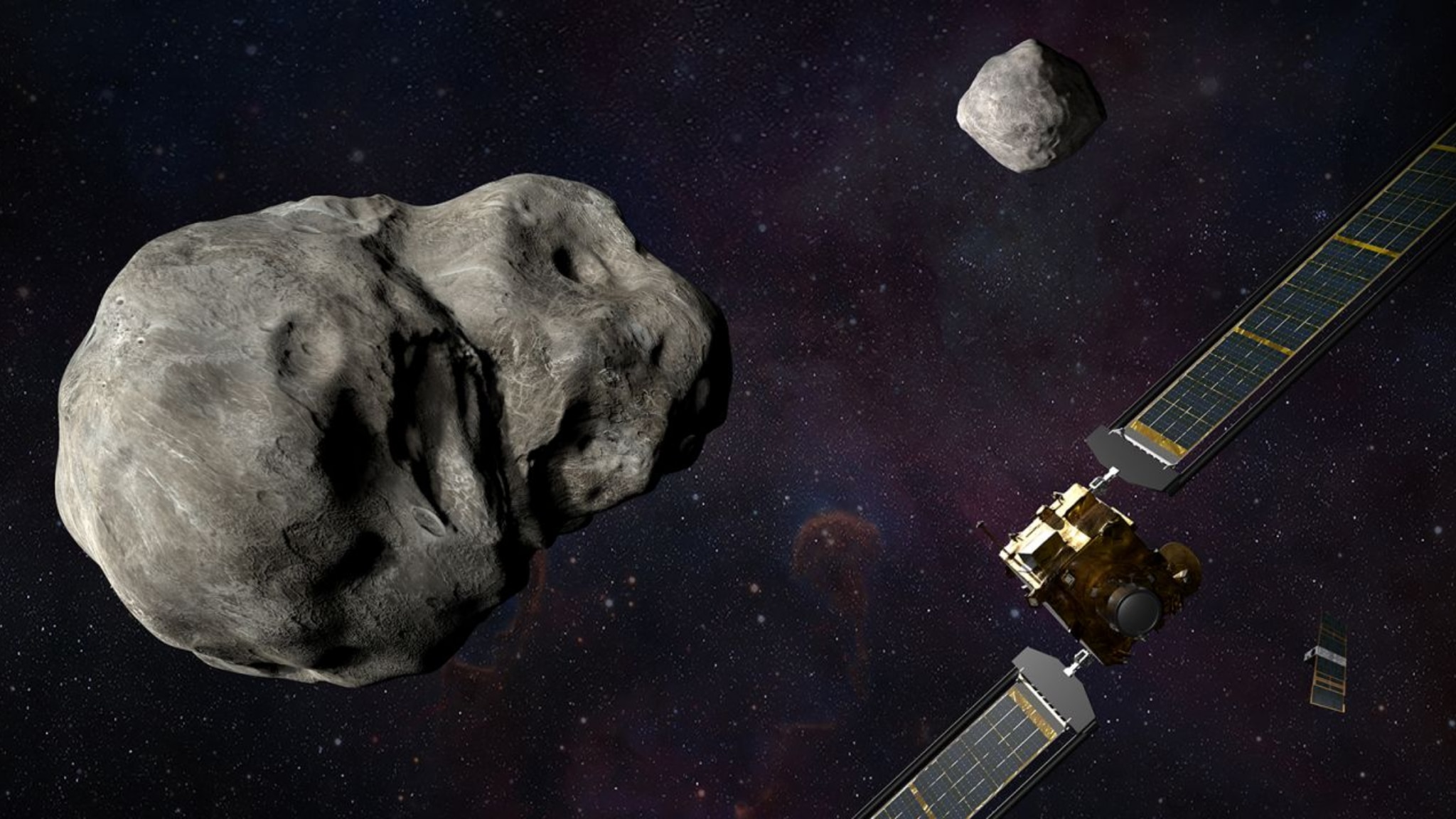The appointment is set for September 26, when a NASA spacecraft for the Dart - Double Asteroid Redirection Test -
will violently impact the rocky body
identified by the US space agency, to test its ability to modify its trajectory, test " necessary in case an asteroid is on a collision course with the earth ".
An appointment that started on November 24 last year, when Dart took off at 7.21 am, Italian time, almost 10 months ago.
A
Rendezvous
(technical term to define precisely the collision between two celestial bodies in space), creepy reminiscent of Hollywood blockbusters films, not always with a happy ending.
NASA JPL DART Navigation Team
The light from the asteroid Didymos and its moon Dimorphos is visible in a set of 243 images taken by DRACO on July 27
The Dart mission
is heading towards Dimorphos, a small moon orbiting the near-Earth asteroid "Didymos".
The asteroid system poses no threat to Earth, NASA officials said, making it a "perfect target for testing kinetic impact", which may be needed "if an asteroid is on track to hit Earth."
The event will be the
first large-scale demonstration by the agency of the deflection technology capable of protecting the planet
: "For the first time ever - as CNN reports - we will measurably change the orbit of a celestial body in the universe, "said Robert Braun, head of space exploration at the Johns Hopkins University Applied Physics Laboratory.
(NASA / Contrast)
The iconic photograph taken by astronaut William A. Anders aboard Apollo 8 on December 24, 1968. 24, 1968
NASA's spacecraft will crash into an asteroid moon to see how it affects movement.
The live stream of images captured by the spacecraft will be available on the NASA website on September 26.
Near-Earth objects are asteroids and comets with orbits located within 30 million miles (48.3 million kilometers) of Earth.
Detecting the threat of near-Earth objects - called NEOs - that could cause severe damage is a primary goal of NASA and other space organizations around the world.
On a collision course
Astronomers discovered Didymos more than two decades ago: from the Greek "twin", it forms a binary system with the smallest asteroid, or moon.
Almost a kilometer wide (0.8 km):
it has a diameter of 160 meters
.
ASI
ASI Space Center of Matera
The Italian Space Agency will register the collision
At the moment of impact, Didymos and Dimorphos (the little Moon) will be relatively close to the Earth: 11 million kilometers.
The NASA spacecraft will accelerate to 24,140 kilometers per hour to collide with Dimorphos.
The collision will be recorded by LICIACube - The Light Italian CubeSat for Imaging of Asteroids - a companion "cube" satellite provided by
the Italian Space Agency: the CubeSat - the size of a briefcase - is currently traveling a short distance from the Dart in space
.
Dimorphos was chosen for this mission because its dimensions are relative to asteroids that could pose a threat to Earth.
The spacecraft is about 100 times smaller than Dimorphos, so it won't wipe out the asteroid.
The rapid impact
will only change Dimorphos' speed as it orbits Didymos by 1%:
apparently a minor change in its trajectory, but in reality it would be - according to the estimate of NASA scientists -
unofficial to change the orbital period. of the moon.
"Sometimes, we say it
's like racing a golf cart against a great pyramid
, or something - so NASA at CNN - but for Dimorphos, it's really a strong deflection of the asteroid: this won't. explode, but the thrust will move it slightly and make it more gravitationally bound to Didymos. "
Handle
Illustration of an asteroid transiting close to Earth
No asteroid is currently on a direct impact route with Earth
, but there are more than 27,000 rocky bodies close to Earth, of all shapes and sizes.
Valuable data collected by DART will contribute to planetary defense strategies, particularly understanding what kind of force can move the orbit of an asteroid close to Earth, which could collide with our planet.
The spacecraft recently glimpsed Didymos using an instrument called Didymos Reconnaissance and Asteroid Camera for Optical Navigation, or DRACO.
It was about 32 million kilometers away from the binary asteroid system when it took its first images last July.

